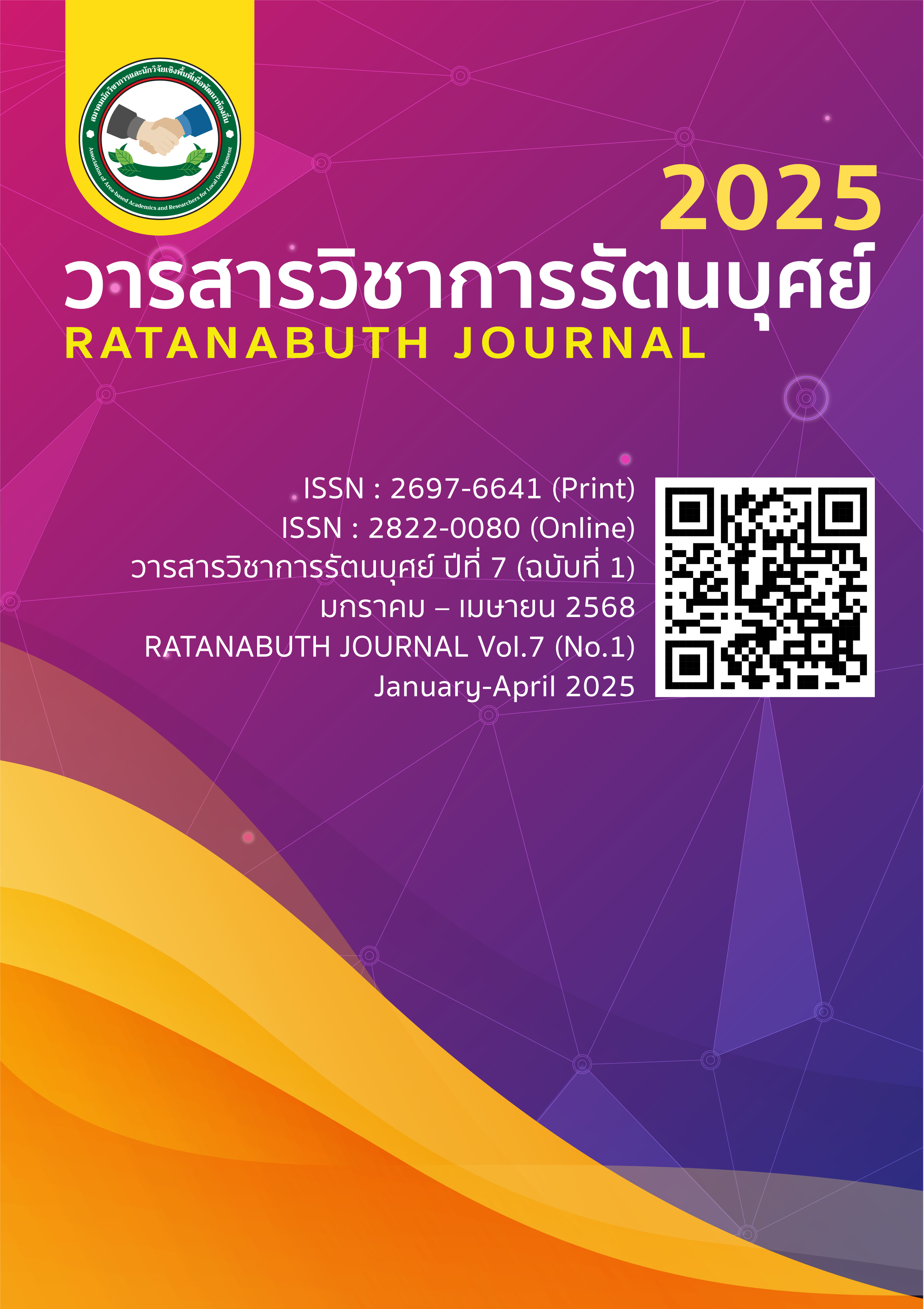Factors affecting the adaptation of prisoners in Maha Sarakham Provincial Prison Factors affecting the adaptation of prisoners in Maha Sarakham Provincial Prison
Main Article Content
Abstract
The problem of prisoner adjustment in prison is an important issue in terms of both human rights and prison management, such as the limitation of freedom, strict rules, relationships between prisoners, and the behavior of prison officers. This study aims to (1) examine the level of adaptation among prisoners in Mahasarakham Provincial Prison, (2) identify factors influencing prisoner adaptation, and (3) gather recommendations for improving prisoner adaptation. This quantitative research involves a sample group of 335 inmates from Mahasarakham Provincial Prison. The research instrument is a questionnaire, and statistical methods include frequency distribution, percentage, mean, standard deviation, and multiple linear regression analysis. The findings are as follows: (1) the overall adaptation level of prisoners in Mahasarakham Provincial Prison is high; (2) factors influencing adaptation include housing, hygiene, clothing, food, medical services, external communication, and religious practices. These seven variables can predict changes in the quality of medical services in the prison with 87% accuracy, significant at the 0.05 level; and (3) recommendations for adaptation include streamlining the distribution process for clothing and footwear, increasing personal item distribution for new inmates, providing larger food portions, emphasizing cleanliness, and diversifying the prison’s food offerings.
Article Details

This work is licensed under a Creative Commons Attribution-NonCommercial-NoDerivatives 4.0 International License.
References
กรมราชทัณฑ์. (2566). สถิติผู้ต้องราชทัณฑ์ เดือนตุลาคม 2565. สืบค้นเมื่อ 20 สิงหาคม 2567 จาก http://dspace.spu.ac.th/bitstream/pdf.
ธงชัย ทองคำ. (2563). ปัจจัยที่ส่งผลต่อคุณภาพชีวิตของผู้ต้องขังเรือนจำจังหวัดมหาสารคาม.วิทยานิพนธ์ มหาบัณฑิต. มหาสารคาม: มหาวิทยาลัยราชภัฏมหาสารคาม.
บุญชม ศรีสะอาด. (2558). การวิจัยเบื้องต้น (พิมพ์ครั้งที่ 9). กรุงเทพฯ: สุริยาสาส์น.
รังสรรค์ สิงหเลิศ. (2558). ระเบียบวิธีวิจัยและการใช้สถิติสำหรับการวิจัยทางสังคมศาสตร์. กรุงเทพฯ: บริษัท ทริปเพิ้ล กรุ๊ป จำกัด.
เรือนจำจังหวัดมหาสารคาม. (2566). รายงานประจำปี 2566. เรือนจำจังหวัดมหาสารคาม.
สุวภัทร พิรณฤทิ์. (2555). คุณภาพชีวิตของผู้สูงอายุ: กรณีศึกษาเรือนจำกลางและทัณฑสถานหญิง พิษณุโลก.วิทยานิพนธ์มหาบัณฑิต.พิษณุโลก: มหาวิทยาลัยนเรศวร.
Cohen, F., & Landau, R. (2007). The effects of prison health care on mental well-being and stress in incarcerated individuals. Journal of Correctional Health Care, 13(2), 109– 120.
Her Majesty’s Inspectorate of Prisons. (2009). Food and the prisoner experience. Her Majesty’s Inspectorate of Prisons for England and Wales.
Jewkes, Y. (2002). Captive audience: Media, masculinity and power in prisons. Routledge.
Jewkes, Y., & Moran, D. (2017). The Routledge handbook of prisons and imprisonment. Routledge.
Johnson, B. R. (2002). Religion and crime: A review of the evidence. Social Problems, 49(1), 51–72.
Liebling, A., & Maruna, S. (2005). The effects of imprisonment. Willan Publishing.
MacKenzie, D. L. (2006). What works in corrections: Reducing the criminal activities of offenders and delinquents. Cambridge University Press.
Reinhardt, S., & Rosenberg, S. (2012). Hygienic conditions and the physical and mental health of incarcerated persons. American Journal of Public Health, 102(6), 1050–1056.
Roy, S. C., & Andrews, E. H. (1999). The Roy adaptation model (2nd ed.). Appleton & Lange.
Toch, H. (2000). Altruistic activity as correctional treatment. International Journal of Offender Therapy and Comparative Criminology, 44(3), 270–278.
Yamane, T. (1973). Statistics: An introductory analysis (3rd ed.). Harper and Row Publication.


